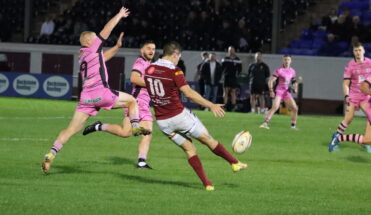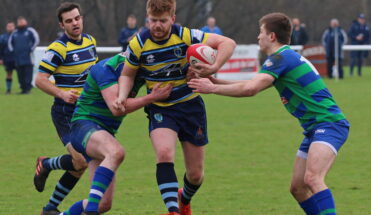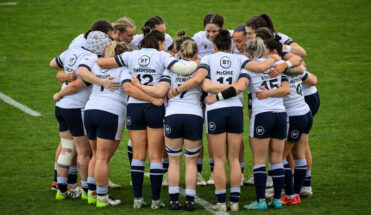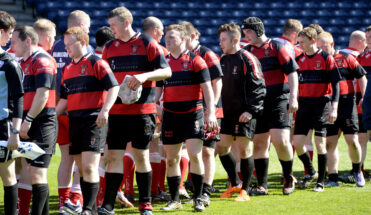In the media: Scotland’s journey to Japan
When the team take to the pitch at the Yokohama Stadium on 22 September to face Ireland, there’ll have been preparations a-plenty to get them in peak shape and ready to play that will have gone under the radar for even the most avid of followers.
Scotland’s back room staff have been planning and preparing for the squad to arrive, train, live and play in Japan for a long time and in this article we’ll go behind the scenes to share the insight and details that are key to getting our players to Japan and ready to play when the spotlight shines on the first Pool game.
Pre-planning
Scotland’s management staff have visited Japan numerous times ahead of the tournament – visiting our training venues and hotels to look at the intricacies of our trip, including visits this time last year to get a snapshot of the conditions at this crucial time of year.
Scottish Rugby have developed strong links and a connection with the city of Nagasaki since signing a strategic alliance in 2016. Nagasaki will be the first stop for the squad and the host of the acclimation camp and training venues before the tournament starts.
In the first week, Scotland will be attending events in and around the city of Nagasaki, starting with an open training session for 500-600 local school children. Several other trips have been planned in advance to support local initiatives, grow the connection between Japan and Scotland and the players’ understanding of the city and country.
The flight
In an interview with BBC Sport, Scotland’s Head Strength and Conditioning talked about the players’ routine and what they’ll be equipped with as they travel the 5,500 miles trip.
“We will support players’ sleep with eye masks and ear plugs, and they will be issued with a travel pack containing chewing gum, first defence and zinc tablets to support immunity. Players will wear compression socks and have timings for a stretch and movement to improve blood flow.
“Typically jetlag would be one day per time zone crossed travelling eastward, so Japan should be eight days to fully get over it. The days after arrival we’ll ensure training is progressed, sleep is prioritised, the timing of sun exposure is utilised and individuals are monitored closely.”
?????
Travel buddy @ryanwilson89. Here we go. #AsOne pic.twitter.com/dbmz4jieUD
— Stuart W Hogg (@StuartWHOGG_) September 9, 2019
A taste of Japan
Scotland’s performance nutritionist Tom Coughlin has the task of ensuring the squad are equipped with the guidelines of what and when to eat and intake on their journey but also when they land in Japan to the local cuisine.
“Japanese food can be beneficial from a fuelling and recovery perspective too due to increased intakes of nutrients such as omega-3 and electrolytes,” he said.
“We have had a number of Japanese theme nights throughout camp to give us an idea of what is ahead for the team.
“In addition, World Rugby has been consulting with the designated hotels and chefs to help train and educate them in more ‘western’ cuisine. Therefore, we will be having a mixture of the two cuisines during our time out in Japan.” He said to BBC Sport.
Ready for the heat
Japan’s heat will be a sharp contrast to the weather back home in Scotland. Daytime temperatures in Toyko in September can be up around 30 degrees with high humidity, but the back room staff have been taking steps over the summer to prepare the squad for this – including heat strategies of hot baths and saunas and a training camp in the summer heat in Portugal, which was a similar temperature during the squad’s stay.
With the team arriving 13 days before the first fixture, the back-room staff will be ensuring the squad are acclimatised to their surroundings.
The Culture
This is not the first visit for some of the players within the squad, as Scotland travelled to Japan for Summer Tour in 2016. Visiting Tokyo and Toyota City on that tour and experiencing the culture of the Rugby World Cup host cities.
In the lead up to the tournament, the squad and back room staff have had Japanese themed food nights, language lessons and also embraced the national sport of Japan – sumo wrestling.
Scotland’s Performance Services Operations Manager David Edge talked about some of the experiences the squad will encounter in Japan in their down time between sessions.
He said: “Golf will be a popular activity for the players, both on the course and in the simulators in the big cities and we are keen to go and see some other sports – baseball, sumo and football especially,” explained Edge.
“In Nagasaki we will visit the atomic bomb museum to pay our respects and allow the squad to appreciate the huge impact this had on Nagasaki. There’s a great lesson there in resilience and fighting back when everything is against you.”
Follow the team
Follow the Scotland team during the Rugby World Cup right here on scottishrugby.org – with a range of content from behind the scenes of the Scotland training camp and as they go through the pool stages of the tournament. To view articles, videos, image galleries and more about the Scotland team visit the Fan Zone on our website here.
You can also follow the Scotland team on your social media channels: Instagram, Twitter, Facebook, YouTube.

Related Fanzone

Review of Round 2 | Super Series Sprint

Ireland v Scotland Women | Preview

Podcast: Rachel Malcolm | One to one with Caroline Blair

Guide to the Games | Round 2

WATCH LIVE: 2024 Silver Saturday

Silver Saturday preview: Scottish Cup final: Edinburgh Academical v Hawick

Silver Saturday preview: Sarah Beaney Cup: Watsonians v Hillhead Jordanhill

Silver Saturday Preview: Men’s League Cup final: Lasswade v Falkirk


Watch: Rise Now | Bounce back in Parma





